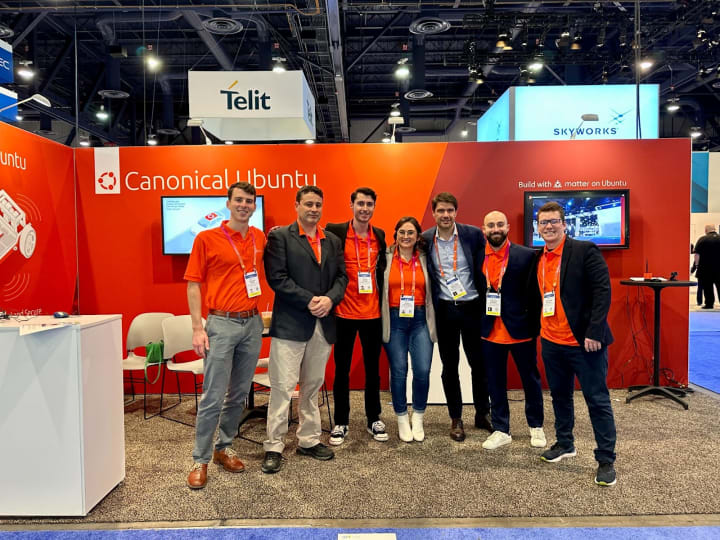Bertrand Boisseau
on 11 January 2023
CES is a once a year opportunity for all industry professionals to showcase their innovations and meet with their peers and customers. This year is special for Canonical because although we attended as visitors in the past, it was the first time we had a booth dedicated to Automotive and Smart Home IoT at CES!
Although I may be biased, this 2023 edition was definitely a big year for Automotive innovation.

Software trends
From a software perspective, the most important trend we observed is the use of cloud native environments for software developments. Solutions like VirtIO make it possible for teams to start developing from anywhere in the world without having a physical Electronic Control Unit (ECU).
The other key advantage of this approach is the fact that developers can easily deploy from the cloud to one of multiple physical ECUs in a fast and seamless manner.
We’ve also seen a strong push for in-vehicle cloud gaming solutions. Thanks to 4G and 5G speeds, it’s possible to obtain in-car multi screen streaming of next-gen console graphics!
The fight for high-definition maps has also proven to be stronger than ever, with announcements from most of the biggest map providers like Google, TomTom and Here. With interesting partnerships in formation, lane-level maps are undeniably considered a key sensor for AD vehicles.
Autonomous driving
Since we’re talking about sensors for autonomous driving, I can’t remember a year with as many companies demonstrating the efficiency of their components. From photonic positioning to 4D radars and LiDARs of all shapes and sizes, redundancy of elements allowing the vehicle to position itself in any environment has proven to be crucial.
Although CES is not a motor show per se, I have to admit it really looked like one. With autonomous shuttles at every corner of each hall of the convention center, these new vehicle types are definitely getting traction. Companies like Peugeot presented concept cars at CES and several collaborations between tech companies and automotive companies like Sony and Honda took the stage.
Electrification investments
The exciting part also comes from the fact that 99%, if not all of these vehicles, were EVs. Even companies that haven’t been known for developing EVs presented the results of huge investments in electrification. RAM and Dodge are the best examples of the switch from powerful ICE engines to electric ones.
Hardware trends
As much as the software innovations were impressive, the hardware was also extremely exciting. From advanced ECU platforms leveraging the move to software-defined vehicles to SOCs (system on a chip) dedicated to mixed critical workloads, the challenges of optimised architectures and functional safety are now taken seriously by the whole industry.
Flying cars and driver wellbeing
I think some miscellaneous announcements are also worth mentioning. Flying cars are still a thing, with partnerships being put in place between automotive OEMs and aeronautic companies.
The driver’s wellbeing is also an element that was demonstrated multiple times. Driver health monitoring systems have definitely passed a milestone this year. Imagine your car being able to track your heart beats and stress levels, then adapting the mood and vehicle’s ambient lights without you having to do anything. That may happen sometime in the future.

In conclusion
CES 2023 will for sure remain one of the great shows of this year. The innovation showcased at the event shows that 2023 will be a great year for software and technology.
Automotive, in particular, is benefiting from a lot of innovation and technological investments. From software to hardware and services, automotive is a very exciting industry to be in today!
Curious about automotive at Canonical? Check out our webpage.



